Celebrating our African historical
personalities, discoveries, achievements and eras as proud people with rich
culture, traditions and enlightenment spanning many years.
Famous Historical Muslims of African/Black Origin
Islamic civilization currently encompasses every
culture, ethnicity, race, and language on the planet. The pages of Islamic
history are filled with the emergence of many different ethno-linguistic
groups, from regions as far apart as West Africa and Central Asia, as important
political and cultural forces, which greatly impacted the direction of Islamic
civilization. Unfortunately, despite this reality, Muslim history has often
been presented as a series of accomplishments revolving around Arabs, Persians,
and Turks, to the exclusion of all other groups. The rich histories of hundreds
of Muslim ethnic, racial, and linguistic groups have too often been overlooked
or overshadowed by this mistaken approach towards Muslim history and
expropriated by the master narrative which seeks to identify Muslim history
with a very specific cultural and geographic context.
The marginalization of the historical legacy of
African Muslims needs to be understood within this broader context. Black
Muslims, or Muslims of African origin, have played—and continue to play— a
particularly important role in Islamic civilization as ascetics, reformers,
leaders, revolutionaries, and scholars. In many ways, the egalitarian and
diverse spirit of Islam is most clearly manifested in this history, the impact
of which extended far beyond Africa and the influence of which has left a
significant historical legacy. Yet, many Muslims are ignorant of this rich history.
How many Muslim youths are familiar with the story of Usāma ibn Zayd? When we speak of revolution and justice,
who today speaks of the Zanj rebellion, an ultimately unsuccessful struggle,
colored by messianic tendencies, waged by African Muslims in order to transform
an unjust social and political order? Moreover, in theological circles, while
we examine the works of Ibn al-Qayyim, al-Ghazālī, and
Ibn Arabī—volumes of which have
been translated and are readily available—the reformist thought of Usmān dan Fodio, Nānā Asmā’u and Amadou Bamba remains a mystery to most Muslims,
many of whom have scarcely heard the names of these great scholars from West
Africa. It is important for many Muslims to reclaim this history, which has too
often been forgotten or marginalized. This process of reclamation begins with
the recognition of those individuals who shaped this history and who
contributed to Islamic civilization. Among the most important of these men and
women are:
Sumayya b. Khayyāṭ (d. 615).
Sumayya was one of the first women to embrace Islam during the Meccan period,
shortly after the declaration of the Prophet’s mission in 610 A.D. She was the
wife of Yāsir b. ‘Āmir and mother to ‘Ammār b. Yāsir. Originally a slave, she was later freed following
the birth of her son. Sumayya, her husband, and her son were the first instance
in the history of the faith of an entire family embracing Islam. Due to the
staunch opposition of the Quraysh tribe of Mecca to the new faith, however,
Sumayya and her family (lacking tribal protection, since they were of humble
origins) bore the brunt of the persecution of the Meccans as they attempted to
destroy the nascent Islamic faith. Due to their refusal to abandon their new
faith, both Sumayya and Yāsir were
publicly tortured before being executed (in front of their son, ‘Ammār) by the Qurashi tribal chieftain Abū Jahl ‘Amr b.
Hishām in 615 A.D. As such,
Sumayya is considered to be the first martyr in Islam according to Muslim
tradition.

Bilāl ibn Rabāḥ (d. 640). Bilāl was an
emancipated Ethiopian slave who became one of the closest and most trusted
companions of the Prophet Muhammad and the first muezzin (caller
to prayer) in Islam. During the time of the Prophet, he was appointed to the
important position of the custodian of the treasury (bayt al-māl). He
participated in most of the Prophet’s expeditions and battles and proved his
dedication to the Islamic cause on numerous occasions. Following the death of
the Prophet, he was among the most important partisans of ‘Alī b. Abī Tālib and supported his claims to the caliphate. He died
in Syria around 640 and is buried in Damascus.

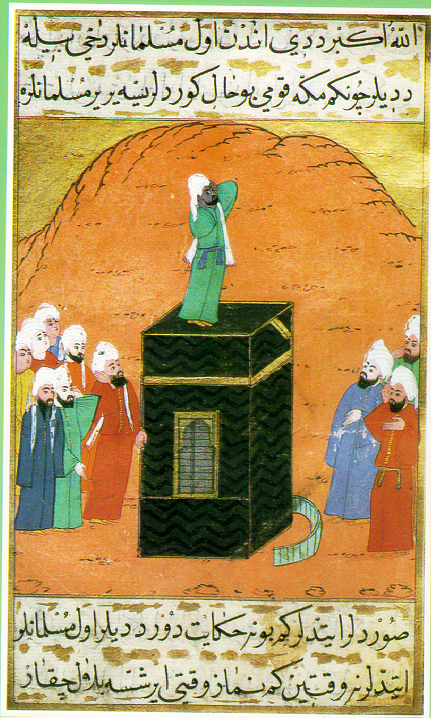
Umm Ayman (d. 650). Umm
Ayman, also known as Barakah, was an emancipated Ethiopian slave and a renowned
companion of the Prophet Muhammad and was one of the few individuals who
closely knew the Prophet from his birth until his death. She was married to
Zayd b. al-Ḥāritha, the adopted son of
the Prophet, and was among the closest and most trusted confidants of the
Prophet Muhammad. She was among the earliest converts to Islam and
participated in the battle of Uhud, caring and tending for the wounded. She
died in 644 and is buried in the Jannat al-Baqī’ cemetery in Medina.
‘Ubāda b. al-Ṣāmit b. Qays al-Khazrajī al-Anṣārī (d.
654). An early Companion of the
Prophet Muhammad, ‘Ubāda was
one of the earliest converts to Islam in Medina and participated in all the
major battles of the Prophet, including Badr and Uhud. During the time of the
Prophet, he was among the most respected Companions and was appointed to a
position of authority more than once by the Prophet. ‘Umar b. al-Khaṭṭāb (d. 644), the second caliph, had immense respect for
‘Ubāda and described him as a “man whose value exceeds that of 1000 men.” During the early caliphate, he was appointed by Abū Bakr (r. 632–634) and
‘Umar (r. 634–644) as
an emissary to the Cyrus of Alexandria (d. 641), the Byzantine prefect of
Egypt, and he played an important role as a general in the Arab conquest of
Egypt in 642. A pious individual, he was highly critical of the wealth and
ostentation of certain individuals—especially the governor of Syria, Mu‘awiya
b. Abī Sufyān (d. 680)—whose
Islamic credentials he felt were lacking. He died in 654 and was buried in
Jerusalem, where his tomb became an important site for local visitation.

‘Ammār b. Yāsir (d. 657). ‘Ammar was the son of the martyred Sumayya and Yāsir (mentioned above). As one of the earliest converts
to the faith, he was also viciously persecuted and tortured by the Meccans
before migrating to Medina (according to some sources, he also made the earlier
migration to Abyssinia in 616). He is considered among the most senior of the
Prophet’s Companions, having converted early and participated in every major
event and expedition during the lifetime of the Prophet. Following the
Prophet’s death, he was among the most committed partisans of ‘Alī b. Abī Ṭālib’s claim
to the caliphate and played a significant role as a scholar within the early
Muslim community, transmitting many of the Prophet’s teachings. He was a major
vocal critic of the third caliph, ‘Uthmān b. ‘Affān, and opposed many of the latter’s policies, which he believed were unjust. ‘Ammār was
killed in the Battle of Siffin (657) while fighting for the fourth caliph, ‘Alī b. Abī Ṭālib, against the army of Mu‘āwiya b. Abī Sufyān in Syria. He is widely considered by Muslims, to
have been one of the closest and truest companions of the Prophet Muhammad and
his Family, and thus as a paragon of righteousness in the early Muslim
community. His tomb in Syria was a major site of visitation for pilgrims from
across the Islamic world until its destruction by Salafist-Jihadists in March
2013.
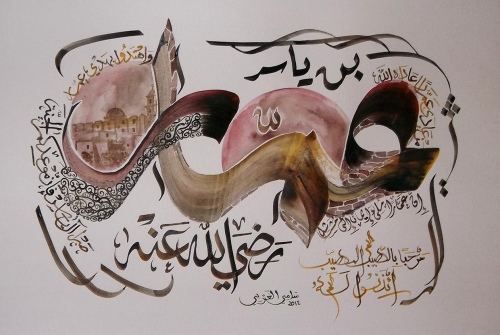
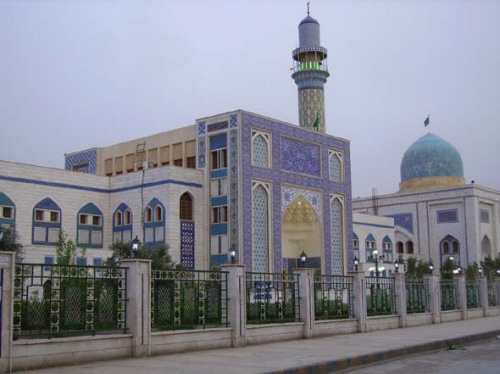
Usāma b.
Zayd (d. 674). The son of
Zayd ibn al-Hāritha and Umm Ayman, Usāma b. Zayd was among the closest companions of the
Prophet Muhammad, and was the youngest individual ever appointed as a military
general during the lifetime of the Prophet, leading a military force—which included some of the highest-ranking
companions—when he was only seventeen years old. Following the Prophet’s death,
he played an important role as a general, especially in the military campaigns
against Byzantium, and is best known for his neutral stance during the civil
wars that took place during the caliphate of ‘Alī b. Abī Tālib (r. 656-661). He died around 674 and is buried in
Medina.
For more on these early Islamic figures and Companions
of the Prophet, see:
Asma Afsarrudin, The First Muslims: History
and Memory (2007)
Muhammad Yusuf Kandhalawi, Hayatus-Sahaba: The
Lives of the Sahaba(2007)
Ella Landau-Tasserson (trans.), The History of
al-Tabari, Vol. 39: Biographies of the Prophet’s Companions and Their
Successors: al-Tabari’s Supplement to his History (1998)
Martin Lings, Muhammad: His Life Based on the
Earliest Sources (2001)
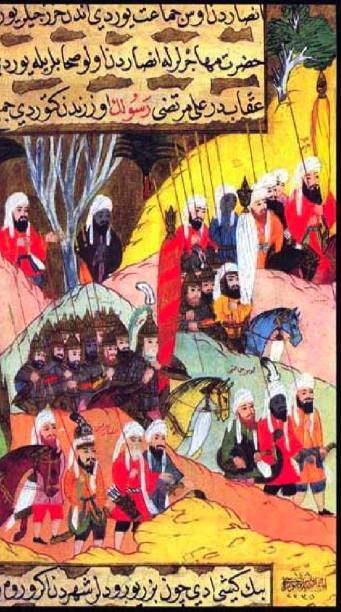
Muhammad b. ‘Alī al-Jawād al-Husaynī (d. 835). Considered the ninth Imām by the Twelver Shi’i tradition, Muhammad al-Jawād was from the lineage of the Prophet and one of the
most important Alid figures during his time. His mother, al-Khayzaran (also
known as Sabika), was of Nubian or East African origin and was an important
figure in her own right, with many Muslims considering her among the most
virtuous and knowledgeable women of her era. Muhammad al-Jawād undertook the responsibility of the Imamate while
only 8 years old and died at the young age of 25. Although he lived in
turbulent times and despite his youth, he played an important role—religiously
and intellectually—as the leader of the Shi‘i community. In addition to being
revered as the Imām of the Age by Twelver Shi’is, he is also highly respected and revered by Sunnis
as a religious scholar and one of the most prominent leaders of the Ahl al-Bayt
in his time. He died in 835—probably poisoned on the orders of the Abbasid
caliph—and was buried in Baghdad next to his grandfather Mūsa al-Kāẓim (d.
799), where his shrine remains an important place of visitation for the
faithful. Among the many pieces of wisdom that have been ascribed to him is the
following:
“Modesty is the ornament of poverty, thanksgiving is
the ornament of affluence and wealth. Patience and endurance are the ornaments
of calamities and distress. Humility is the ornament of lineage, and eloquence
is the ornament of speech. Committing to memory is the ornament of [hadith]
narration, and bowing the shoulders is the ornament of knowledge. Decency and
good morale is the ornament of the intellect, and a smiling face is the
ornament of munificence and generosity. Not boasting of doing favors is the
ornament of good deeds, and humility is the ornament of service. Spending less
is the ornament of contentment, and abandoning the meaningless and unnecessary
things is the ornament of abstention and fear of God.”
العفاف زينة الفقر، والشكر زينة الغنى، والصّبر زينة البلاء والتواضع زينة الحسب، والفصاحة زينة الكلام، والحفظ زينة الرواية، وخفض الجناح زينة العلم، وحسن الأدب زينة العقل، وبسط الوجه زينة الكرم، وترك المنّ زينة المعروف، والخشوع زينة الصلاة، وترك ما لا يعني زينة الورع
[Narrated in Kashf al-Ghummah fī Ma‘rifat
al-A’immah (Volume
3, p. 139 in the Beirut 1985 edition) by Abū al-Ḥasan ‘Alī b. ‘Isa
al-Irbilī (d. 692/1293) and
al-Fuṣūl al-Muhimmah fī Ma‘rifat
al-A’immah (p. 261
in the 1988 Beirut edition) by Nūr al-Dīn ‘Alī b. Muḥammad (d. 885/1451), known as Ibn al-Sabbāgh]
For further reading:
Shaykh al-Mufid, Kitab al-Irshad: The Book of
Guidance into the Lives of the Twelve Imams (2007)

Dhūl Nūn Abū al-Fayḍ Thawbān b. Ibrāhīm al-Miṣrī (d. 859). One of the most prominent early mystics in the Islamic
world, Dhūl Nūn originated from Nubia and was the teacher of another
prominent early Sufi, Sahl al-Tustarī (d.
896). His teachings emphasized the central role of gnosis or ma‘rifa in
attaining higher spiritual truths. He has also been associated with Hermetic
philosophy and alchemy, which resulted in his being tried for heresy by the
Abbasids in Baghdad in the 840s. According to the tenth-century historian
al-Mas‘ūdī (d. 956), Dhūl Nūn was “an
ascetic and a philosopher who pursued a course of his own in religion. He was
one of those who elucidate the history of these temple-ruins (barabi).
He roamed among them [the temples] and examined a great quantity of figures and
inscriptions.” This interesting statement is most likely a reference to Dhūl Nūn’s interest in the hieroglyphs and inscriptions on the
many temples he encountered in Egypt, which he believed possessed an inner
spiritual meaning and perhaps a trace of the Hermetic sciences of the past.
For more, see:
Farid al-Din Attar and A.J. Arberry (trans.), Muslim
Saints and Mystics: Episodes from the Tadhkirat al-Auliya’ (1990)
Annemarie Schimmel, Mystical Dimensions of
Islam (1975)
“al-Jāḥiẓ” Abū ʿUthman ʿAmr b.
Baḥr (d.
869). Originally from Basra,
al-Jāḥiẓ is renowned as one of the most important litterateurs
in Islamic history. In addition, he was an accomplished Mu‘tazalite theologian,
poet, philosopher, grammarian and linguist. He authored about 200 books on
various subjects ranging from religio-political polemics to treatises on
rhetoric and zoology. Among his most famous works is his Risālat Mufākharat al-Sūdan ‘ala
al-Biḍān, an impassioned defense of the superior qualities and
accomplishments of the peoples of sub-Saharan and East Africa.
For more, see:
Charles Pellat, The Life and Works of
al-Jahiz: Translations of Selected Texts(1969)
Abū
al-Misk Kafūr (d. 968). Originally an East African slave, Kafūr rose to become a military commander and eventually sultan
of the Ikhshidid dynasty, which included territory encompassing modern-day
Egypt, Sudan, Libya, Eritrea, Palestine, Syria, Lebanon, Turkey, Cyprus, Iraq,
Jordan, and the Hejaz. An effective ruler, he was able to defend his realms
from incursions from the Fatimids, Hamdanids and Qaramita. He was also a major
patron of the arts and scholarship, with the famous Arab poet al-Mutannabi (d.
965) being among the many poets whom he patronized.
For more, see:
Marshall Hodgson, The Venture of Islam,
Vol 1 (1974)
Hugh Kennedy, The Prophet and the Age of the
Caliphates (2004)
Abd Allāh b. Yāsīn (d.1059).
Jurist, theologian, reformist, and one of the founders of the al-Murābitun (Almoravid) movement and dynasty, which ruled
North Africa and Iberia between 1080 and 1147. He was an important disciple of
the Maliki scholar Waggag b. Zallu al-Lamti (d. 1054) and played a central role
in the Islamization of the Berber tribes of West Africa. It was ‘Abd Allāh b. Yāsīn who played a critical role in transforming the Almoravid
movement from a religious organization into an important political and military
force.
For more, see:
Ronald A. Messier, The Almoravids and the
Meaning of Jihad (2010)
H.T. Norris, H.T. “New evidence on the life of
‘Abdullah B. Yasin and the origins of the Almoravid movement.,” The
Journal of African History, Vol. 12, No. 2 (1971), pp. 255–268.
Al-Mustanṣir bi-llāh (d.
1094). Fatimid Isma’ili
Imam-Caliph. He was born to a Sudanese mother and his caliphate lasted for
about 60 years, the longest of any caliph in the Islamic world. His reign
witnessed intellectual efflorescence, the consolidation of Ismai’li thought and
doctrine, and the expansion of the Fatimid da’wa into regions
such as Yemen and India. It was during his period as caliph that the Fatimids
repelled the attempted Seljuk invasion of Egypt and briefly held sway over
Baghdad in 1058.
For more, see:
Paul Walker, Exploring an Islamic Empire:
Fatimid History and its Sources(2002)
Mansa Mūsa (d.1337).
Emperor of the Malian Empire in West Africa famously known for his wealth,
patronage of Islamic scholars, and magnificent architectural projects. His
reign is remembered as one of the most prosperous of any monarch in the history
of Muslim West Africa. His fame was so extensive and his wealth was so renowned
that his name was well-known in Western Christendom and he was featured quite
prominently in the Catalan Atlas of 1375 (image below).
For more, see:
Nawal Morcos Bell, “The age of Mansa Musa of Mali:
Problems in succession and chronology”, International Journal of
African Historical Studies 5 (1972): 221–234.
Nehemia Levtzion and John F.P. Hopkins, eds. Corpus
of Early Arabic Sources for West Africa (2002)
Nehemia Levtzion, “The thirteenth- and
fourteenth-century kings of Mali”, Journal of African History (1963):
341–353
P. James Oliver, Mansa Musa and the Empire of
Mali (2013)
Sonni Alī (d.1492). Military strategist, conqueror, and
founder of the Songhai Empire in West Africa. In comparison with his
successors, he promoted a syncretic religious policy in his kingdom, which led
to strong opposition from the religious establishment.
For more, see:
Patricia McKissack and Frederick McKissack, The
Royal Kingdoms of Ghana, Mali and Songhay: Life in Medieval Africa (1995)
Askia Mohammad I (d. 1538). The greatest emperor of the Songhai
dynasty who expanded and consolidated the empire. He introduced important
political reforms and extended the boundaries of the Songhai. He was also an
important patron of Islamic scholarship and made Islamic law one of the
cornerstones of his religious policy and aligned himself very closely with the
religious scholars of Timbuktu. His reign witnessed the massive expansion of
trade networks across the region.
For more, see:
John O. Hunwick, Timbuktu and the Songhay
Empire: Al-Sadi’s Tarikh al-Sudan down to 1613 and other contemporary documents (1999)
John. O Hunwick, Sharia in Songhay: The
Replies of al-Maghili (1985)
Mustafa Zemmouri/Estevanico (d.1539).
Also known as Esteban de Dorantes. Enslaved
by the Portuguese and later the Spanish in his native Morocco, Estevanico was
among the earliest travelers in the Americas, taking part in exploration
expeditions in regions corresponding to modern-day Cuba, Mexico, Florida, New
Mexico, Arizona, and Texas. As such, he is considered to be the first
African-born individual to have set foot in continental North America.
For more, see:
Carolyn Arrington, Black Explorer in Spanish
Texas: Estevanico (1986)
Robert Goodwin, Crossing the Continent,
1527-1540 (2008)
Rayford Logan, “Estevanico, Negro Discoverer of the
Southwest: A Critical Reexamination”, Phylon 1 (1940):
305-314.
Elizabeth Shepherd, The Discoveries of Esteban
the Black (1970)

Idrīs Alouma (d.
1603). Administrator, military leader, and ruler of the Bornu-Kamen Empire in
Central Africa. He is remembered for his Islamic piety, legal reforms, and
prosperous rule. He introduced many legal and administrative reforms, grounded
in Islamic law, implemented an Islamic court system and patronized major
construction projects of mosques and madrasas throughout his kingdom. Alouma, a
pious Muslim, played an important role as a patron of Islamic scholarship and
the ulema’ with whom he was closely allied and, following the fall of the
Songhai empire, became the most powerful Muslim monarch between the Niger and
the Nile. He is also credited with an expansion of trade routes and networks
that increased the economic prosperity of the empire. Alouma’s reign also
witnessed the establishment of important diplomatic contacts with the Ottoman
Empire, who sent an embassy to his court. The latter sent him military advisers
that helped introduce important reforms of his army by introducing gunpowder
technology, which contributed to his success on the battlefield against his
enemies. Like Mansa Musa, Alouma is known for having performed the pilgrimage
to Mecca. His military competence, administrative reforms, encouragement of
learning and diplomatic maneuvers allowed Idrīs Alouma to transform Bornu from one kingdom among
many in Central Africa into perhaps one of the most important sub-Saharan
Islamic states.
For more, see:
John O. Hunwick. “Songhay, Bornu and Hausaland in the
sixteenth century”, in J. Ajayi and M. Crowder (eds.), The History of
West Africa (1971): 202-239
Dierk Lange, A Sudanic Chronicle: the Borno
Expeditions of Idrīs Alauma(1987)
B.G. Martin, “Mai Idris of Bornu and the Ottoman
Turks, 1576-1578,”International Journal of Middle East Studies 3 (1972):
470-490

Ahmad Baba (d. 1627). Perhaps the greatest Muslim scholar to ever emerge
from Timbuktu, Ahmad Baba was descended from a long line of Muslim scholars and
lived during the Songhai era and was renowned as a jurist, grammarian,
theologian, political writer, and historian, writing over 40 works during his
lifetime. Following the conquest of Timbuktu by the invading Moroccan forces of
Ahmad al-Mansur in 1591, Shaykh Ahmad Baba was accused of fomenting a rebellion
against the occupiers and was subsequently taken in chains as a prisoner to the
Moroccan capital of Marrakesh in 1593. While in Marrakesh, he was treated less
harshly due to his scholarly credentials and he continued to teach law and
issue legal rulings but was effectively confined by his royal captors to the
city limits. By this time, he had become recognized as one of the most senior
jurists and scholars of his age. Among his most important works are Nayl
al-Ibtihaj, his biographical dictionary in which he compiles a list of the
major Maliki scholars from North and West Africa during this period, Jalb
al-Ni’ma wa Daf’ al-Naqma bi-Mujanabat al-Wulat al-Dhalama, a work on
political theory emphasizing the role of justice as a basis for the legitimacy
of rulers, as well as his compilation of legal rulings. His personal library
consisted of several thousand books, many of which have survived extant.
Following the death of Ahmad al-Mansur in 1603, Ahmad Baba performed the
pilgrimage to Mecca before returning to Timbuktu where he continued his work as
a practicing Maliki jurist and theologian until his death in 1627.
For more, see:
Hunwick, J.O. “A New Source for the Biography of Ahmad
Baba al-Tinbukti (1556-1627)”, Bulletin of the School of Oriental and
African Studies (1964) 27: 568–593
Hunwick, John O. “Ahmad Baba on Slavery.” Sudanic
Africa 11 (2000): 131–139
Lévi-Provençal, E.. “Aḥmad Bābā.” Encyclopaedia of Islam, Second Edition. Edited by: P.
Bearman, Th. Bianquis, C.E. Bosworth, E. van Donzel, W.P. Heinrichs. Brill
Online, 2015

Shehu Usmān dan Fodīo (d.1817). Also
known as ‘Uthman b. Fudi, he was a religious scholar, jurist, ascetic,
reformer, revolutionary, and founder of the Sokoto Caliphate in northern
Nigeria. An ethnic Fulani residing in Hausaland, Dan Fodio was a jurist of the
Maliki school and an adherent of the Qadariyya Sufi order. He placed heavy
emphasis on political and religious reform, believing the Muslim states of West
Africa to have deviated from the principles of justice and righteousness that
were enshrined in Islamic law. He was particularly opposed to the oppressive
social and fiscal practices that had come to dominate Hausaland and found
strong support for his reforms among the peasantry in particular. He
spearheaded a major campaign of religious revivalism and reform in order to
rectify this state of affairs and led a major Fulani armed uprising against the
rulers of Hausaland. His efforts culminated in the establishment of the Sokoto
Caliphate, a theocratic state based strictly on Islamic law. He then waged war
against neighboring states, bringing them under his authority and implementing
his reforms in the conquered regions. Shortly after his establishment of the
caliphate, Dan Fodio, while continuing to hold the title of Commander of the
Believers (amir al-mu’mineen) delegated his authority to his son
(Muhammad Bello) and retired from public life, spending most of his time
engaged in preaching, teaching and writing. He was a prolific writer, authoring
numerous books and treatises on politics, philosophy, theology, mysticism, and
law in both the Arabic and Fulani languages. He was a strong advocate of education
and literacy, for both men and women, and several of his children (including
his daughter, mentioned below) were important scholars in their own right.
Shehu Usman dan Fodio was perhaps the most important
Muslim reformist leader in West Africa during the nineteenth century. This was
due both to his scholarship and his role as a political leader, which
reinvigorated West African Islam with a renewed sense of purpose. Most
importantly was Dan Fodio’s founding of the Sokoto caliphate which brought the
Hausa states and some neighbouring territories under a single central
administration for the first time in history.
For more, see:
Mervyn Hiskett, The Sword of Truth: The Life
and Times of the Shehu Usuman Dan Fodio (1972)
S. J. Hogben and A. H. M. Kirk-Greene, The
Emirates of Northern Nigeria(1966)
Hugh A.S. Johnston, Fulani Empire of Sokoto (1967)
Ghislaine Lydon, On Trans-Saharan Trails:
Islamic Law, Trade Networks, and Cross-Cultural Exchange in Nineteenth-Century
West Africa (2012)
Ibraheem Sulaiman, The Islamic State and the
Challenge of History: Ideals, Policies, and Operation of the Sokoto Caliphate (1987)
Ibrahim Abd al-Rahman (d. 1829). Born into a noble family in West Africa and trained in
the Islamic sciences, studying in the famous scholarly center of Timbuktu,
Ibrahim was enslaved in his twenties by the British and ended up in New Orleans
in the Americas. After spending nearly 40 years as a slave, he was released by
the order of US President John Quincy Adams after the Sultan of Morocco–Mulay Abd
al-Rahman ibn Hisham–had requested his release. He returned to Africa and died
there.
For more, see:
Terry Alford, Prince among Slaves (2007)
Omar ibn Said (d. 1864). Omar ibn Said was a Muslim author and
theologian who was born in modern-day Senegal. In 1807, at the age of 37, he
was enslaved and brought to North Carolina in the continental United States.
Although he officially converted to Christianity around 1820, widespread
evidence suggests that he continued to secretly practice Islam. He left behind
important writings, including significant religious treatises, an autobiography
and an annotated Arabic translation of the Bible. Fourteen manuscripts of his,
all written in Arabic, survive. His works demonstrate his familiarity with the
Qur’an, Islamic theology, and Christianity. He is buried in Bladen County,
North Carolina. As someone who left behind important traces of his life and
thought, he is one of the most renowned of the African Muslims who were
enslaved and brought to the Americas. For more, see:
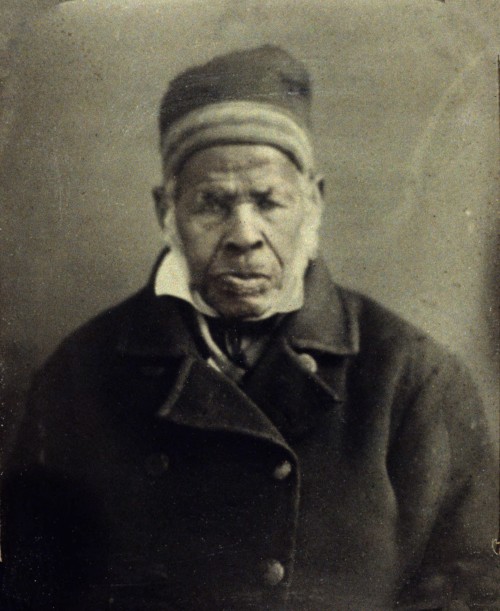
Nānā Asmā’u (d. 1864). She was the daughter of Shehu
Usmān dan Fodīo (d.
1232/1817), a jurist, reformer, ascetic and the founder of the Sokoto
caliphate. Although many have assumed that her fame is linked solely with her
father’s career, it should be
underscored that Nānā Asmā’u was an
important poet, historian, educator, and religious scholar in her own right who
continued to play a major role in the political, cultural and intellectual
developments in West Africa for nearly 50 years after her father’s death. Nānā Asmā’u, both a Mālikī jurist and a Sufi mystic of the Qādirī order,
was devoted to the education of Muslim women and continued the reformist
tradition of her father, believing that knowledge held the key to the
betterment of society. She established the first major system of schools and
other institutions of learning throughout the Sokoto caliphate.

Nānā Asmā’u was
fluent in four languages (Arabic, Fula, Hausa, and Tamacheq Tuareg) and was a
very prolific writer, composing over 70 works in subjects such as history,
theology, law, and the role of women in Islam. As an ardent advocate of the
participation of women in society and as a result of her broad-based campaign
to empower and educate women, she was one of the most influential women in West
Africa in the 19th century. She was also heavily involved in the politics of
the Sokoto caliphate, acting as an adviser to her brother, the Sultan of Sokoto
Amīr al-Mu’minīn Muḥammad
Bello (r. 1232–1253/1817–1837). To end this brief overview of Nānā Asmā’u’s
extraordinary life and contributions, I leave you all with a lengthy quote
summarizing her legacy and accomplishments:
“In addition to teaching students in her own
community, [Nana Asma’u] reached far beyond the confines of her compound
through a network of itinerant women teachers whom she trained to teach
isolated rural women. An accomplished author, Asma’u was well educated,
quadrilingual (in Arabic, Fulfulde, Hausa, and Tamachek), and a respected
scholar of international repute who was in communication with scholars
throughout the sub-Saharan African Muslim world. Asma’u pursued all these
endeavors as a Sufi of the Qadiriyya order, but the driving factor in her own
life and that of the community was their concern for the Sunna, the exemplary
way of life set forth by the Prophet Muhammad. With the Sunna orchestrating the
lives of its members, Asma’u’s Qadiriyva community sought to serve through
teaching, preaching, and practical work, focused on a spiritual life in the
world, while rejecting materialism.
Asma’u was a pearl on a string of women’s scholarship
that extended throughout the Muslim world. This chain of women scholars
originated long before Asma’u’s lifetime and stretched over a wide geographic
region from the Middle East to West Africa. The network of women’s scholarship
contemporaneous to Asma’u is but the tip of the iceberg. It did not spring
forth fullblown, but was nurtured over successive generations as an integral
part of the aim of Islam: the search for communion with God through the pursuit
of Truth. Education and literacy have been hallmarks of Islam since its
inception. Any society that impedes equitable access to salvation by
controlling or limiting who can get an education eschews the tenets of Islam;
so for the Qadiriyya community to which Asma’u belonged, to deny women equal
opportunity to develop their God-given talents was to challenge God’s will.”

[Beverly B. Mack and Jean Boyd, One Woman’s
Jihad: Nana Asma’u, Scholar and Scribe (Bloomington, Indiana: Indiana
University Press, 2000), pp. 1–2]
For more on Nānā Asmā’u, see:
Nana Asma’u, Collected Works of Nana Asma’u. Jean
Boyd and Beverly B. Mack eds. (1997)
Jean Boyd, The Caliph’s Sister: Nana Asma’u,
1793-1865, Teacher, Poet and Islamic Leader (1990)
Beverly B. Mack and Jean Boyd, Educating
Muslim Women: The West African Legacy of Nana Asma’u, 1793-1864 (2013)
For more, see:
Nana Asma’u, Collected Works of Nana Asma’u. Jean
Boyd and Beverly B. Mack eds. (1997)
Jean Boyd, The Caliph’s Sister: Nana Asma’u,
1793-1865, Teacher, Poet and Islamic Leader (1990)
Beverly B. Mack and Jean Boyd, One Woman’s
Jihad: Nana Asma’u, Scholar and Scribe (2000)
Beverly B. Mack and Jean Boyd, Educating
Muslim Women: The West African Legacy of Nana Asma’u, 1793-1864 (2013)

Muḥammad Aḥmad ibn ‘Abd Allāh “al-Maḥdī” (d.1885).
Sudanese reformist, mystic,
revolutionary, and anti-colonial leader who led a major rebellion against the
Turco-Egyptian and British forces in Sudan and managed to establish a large
state in most of the country. He proclaimed himself the Mahdi, or messianic
redeemer, in 1881 and declared that he was divinely-guided and received
inspiration from God. As a reformist, he should be understood as belonging to
the same broader 19th-century trend which had produced individuals such as
Usman dan Fodio, although he made more controversial claims about the nature of
his own authority, which, in addition to being a consequence of his own
mystical-religious ideas, should be understood in the context of the messianic
environment that had taken root in Sudan during this period. The success of his
rebellion made him one of the most renowned anti-colonial leaders of the 19th
century.
For more, see:
Dominic Green, Three Empires on the Nile: The
Victorian Jihad, 1869-1899(2007)
Fergus Nicoll, The Sword of the Prophet:The
Mahdi of Sudan and the Death of General Gordon (2004)
John Obert Voll, “The Sudanese Mahdi: Frontier
Fundamentalist,” International Journal of Middle East Studies 10
(1979): 145–166

Amadou Bamba (d. 1927). Shaykh Amadou Bamba, also known as Khādim al-Raṣūl (“Servant of the Prophet”), was a Senegalese Muslim religious leader, ascetic
and mystic who founded the Murīdiyya
tarīqa/religious brotherhood in 1883. He sought to
transform the religious and social sphere in order to bring society in line
with his conception of the values and principles of the Prophet Muhammad. His
followers considered him to be the religious renewer, or mujaddid, of the age.
Shaykh Amadou Bamba’s works emphasized hard work, perfection of
morals/character, charity, humility, and meditation. In addition to being a
prominent scholar and reformist, he also led a non-violent struggle against
French colonialism in West Africa which led to his severe persecution by the
French colonial authorities throughout his life; despite this, his commitment
to non-violent resistance was unwavering. The Murīdiyya order he founded now has over 4 million
adherents in Senegal and Touba—the city
established by Amadou Bamba as the movement’s center—remains
a major site of visitation for his followers.
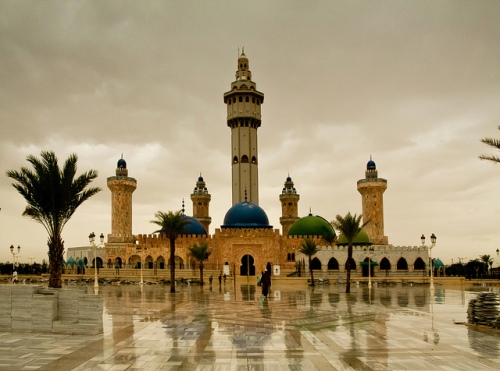
For more, see:
Cheikh Anta Babou. Fighting the Greater Jihad:
Amadu Bamba and the Founding of the Muridiyya of Senegal, 1853-1913. Ohio
University Press (2007)
Cheikh Tidjane Sy, La confrérie sénégalaise
des Mourides, Paris 1969
Dumont, La pensée
religieuse de Amadou Bamba, fondateur du mouridisme
sénégalaise, Dakar 1975
Marty, Les Mourides
d’Amadou Bamba, Paris 1913
Malcolm X (d.1965).
American Muslim revolutionary, public speaker, and civil rights activist.
In 1964, he embarked on a journey to Mecca and Africa that proved to be both a
political and spiritual turning point in his life. This further convinced him
that it was necessary to place the American Civil Rights Movement within the
broader context of a global anti-colonial struggle, embracing national
self-determination and pan-Africanism. It was during his Hajj/pilgrimage to
Mecca that he converted to Sunni Islam and changed his name to El-Hajj
Malik El-Shabazz.
After his epiphany at Mecca, Malcolm X returned to the
United States more optimistic about the prospects for peaceful resolution to
America’s race problems. He believed that Islam provided the vision necessary
to resolve the racial problems in the US. It was during this period, upon his
return from Mecca, that he was reconciled with Martin Luther King Jr.
Tragically, just as Malcolm X appeared to be embarking on an ideological
transformation with the potential to dramatically alter the course of the Civil
Rights Movement, he was assassinated. His legacy has been profound and
continues to exert itself in various ways in the American Muslim community and
beyond.
For more, see:
Saladin Ambar, Malcolm X at Oxford Union:
Racial Politics in a Global Era(2014)
George Breitman, ed. Malcolm X: Selected
Speeches and Statements (1994)
Malcolm X, The Autobiography of Malcolm X: As
Told to Alex Haley (1987)
Muhammad Ali (d. 2016). Perhaps one of the most widely recognized sports
personalities of the 20th century, Muhammad Ali became boxing’s
world heavyweight championship at the age of 22, after his defeat of Sonny
Liston. Although he formally adopted Sunni Islam in 1975, he was previously
affiliated with the Nation of Islam and was highly influenced by one of its
former ministers, Malcolm X (d. 1965). For decades, Muhammad Ali has been a
major advocate and activist for racial justice and religious freedom. He refused
to be conscripted into the US army in 1967, invoking his religious beliefs as
well as his opposition to the war in Vietnam; this transformed him into an icon
of the anti-war movement. His major fame as a boxing champion, as well as his
status as a conscientious objector, made him a figure of international renown
and perhaps the most famous American Muslim during the 20th century.
And, just so we remember that this powerful legacy of
black and African Muslims being a major driving force behind the contributions
of the Muslim community (both in the US and globally) is alive and well, let us
honor those who are still active in our own day:
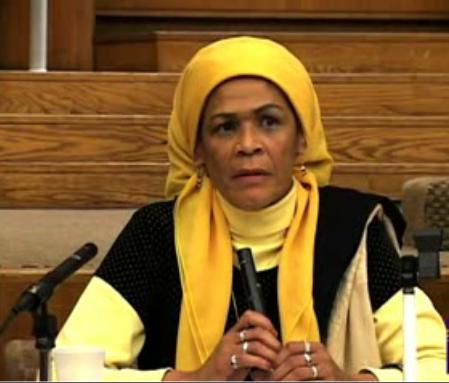
Amina Wadud (b. 1952). Amina Wadud is one of the most prominent and active
intellectuals in the United States. She converted to Islam in 1972 and has
played a major role in the American Muslim community ever since. Drawing on her
impressive scholarly credentials (receiving advanced degrees from the US as
well as studying at al-Azhar in Egypt), Wadud has led the way as a progressive
Islamic reformist, publishing the profoundly influential Qur’an and
Woman: Rereading the Sacred Text from a Woman’s Perspective in 1982.
In addition to her work in gender and women’s studies and her contributions to
Islamic scholarship in the US over the past several decades, Dr. Wadud is also
a prominent activist, having founded the non-governmental organization “Sisters
in Islam.” She has also participated in countless international forums
addressing issues of women’s rights, Islamic reform, and interfaith relations.
In August 1994, she gave the Friday sermon (khutba) in Cape Town, South Africa
and in March 2005 she led Friday mixed-gender congregational prayers in
Manhattan, making it the first time in the history of American Islam that a
woman led Friday prayers. Through her role as a public figure and as an
intellectual, Dr. Wadud continues to exercise a major influence upon American
Islam, especially in progressive circles.

Sherman Abd al-Hakim Jackson (b. 1956). Sherman Jackson is among the most influential Muslim
intellectuals in the United States. As a scholar who works comfortably within
both the American academy and the field of classical Islamic jurisprudence, Dr.
Jackson has been a figure of major importance in the past several decades. His
work on Islamic theology and legal theory has been path-breaking in many ways
and his contributions to the academic study of Islamic law has been recognized
internationally. His book, Islam and the Problem of Black Suffering (2009),
is a singular achievement and demonstrates how deeply Dr. Jackson is dedicated
to understanding both the Islamic historical, legal and theological tradition
as well as the contemporary reality of Afro-American Muslims. He also works
tirelessly to eradicate the misconceptions and hostilities towards Islam and
Muslims in the US.
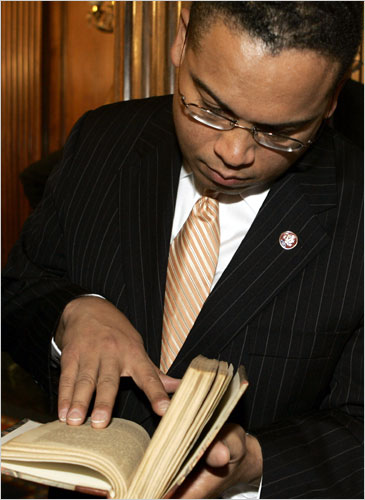
Keith Maurice Ellison (b. 1963). A member of the Democratic Party, Keith Ellison
became the first Muslim in US history to be elected to Congress (as the
representative for Minnesota’s 5th Congressional District). He
was sworn in on an English translation of the Qur’an that once belonged to
former US President Thomas Jefferson.
Hakeem Olajuwon (b. 1963). Of Nigerian descent, Hakeem Olajuwon is one of the
most widely recognized and influential Muslim athletes in the United States. He
played as center for the Houston Rockets and Toronto Raptors between 1984 and
2002, and in 2008 he was inducted into the NBA Hall of Fame. He is the only
player in NBA history to be awarded NBA MVP, Defensive Player of the Year, and
Finals NVP in the same season. Olajuwon was (and remains) a deeply committed
Muslim, and would observe the monthly fast of Ramadan during the NBA season
(often playing while fasting).
Share this:








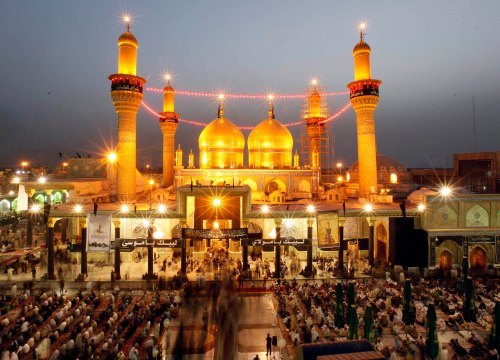

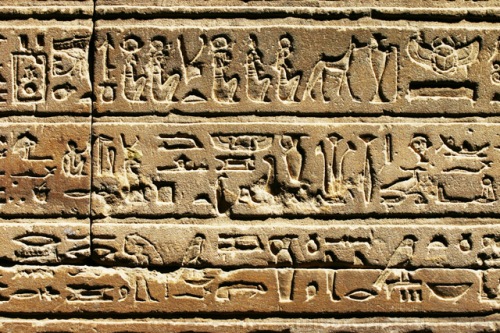

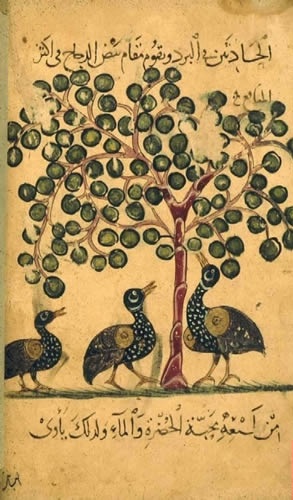
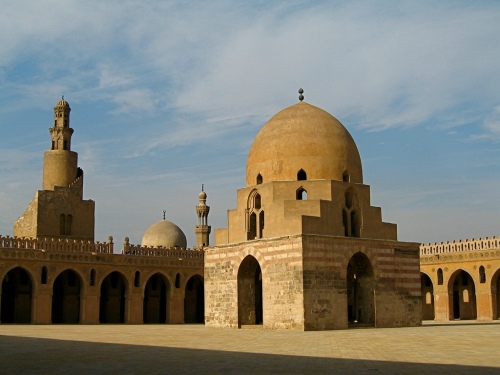
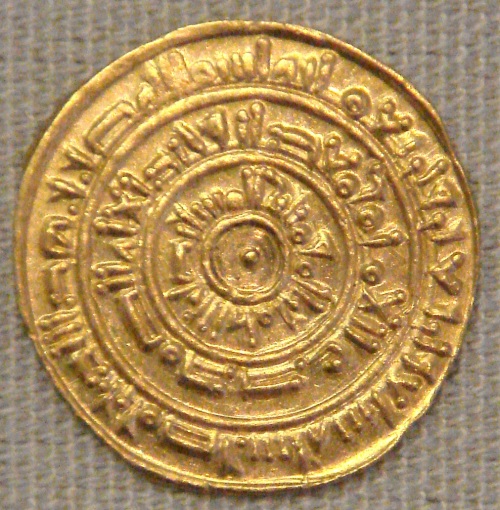

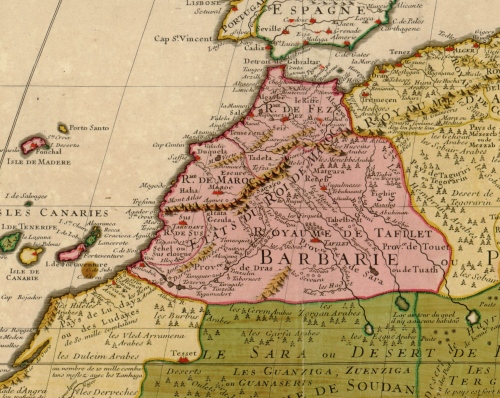

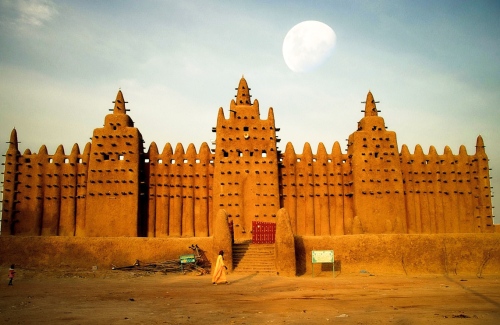
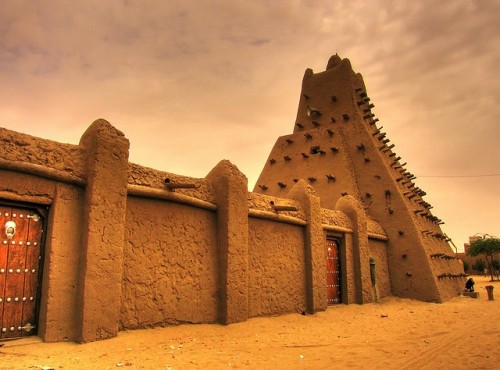
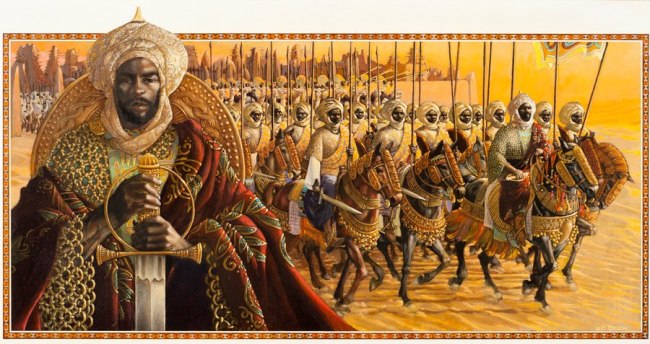
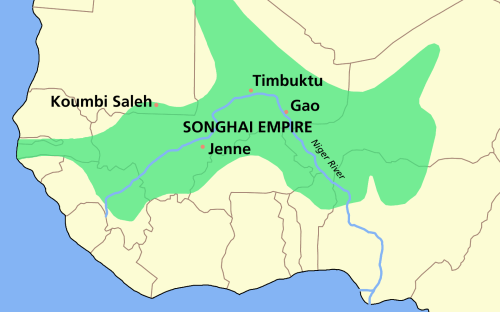






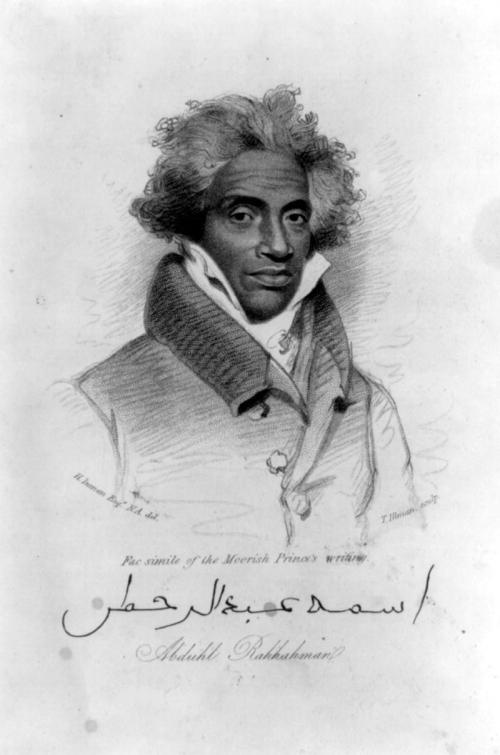




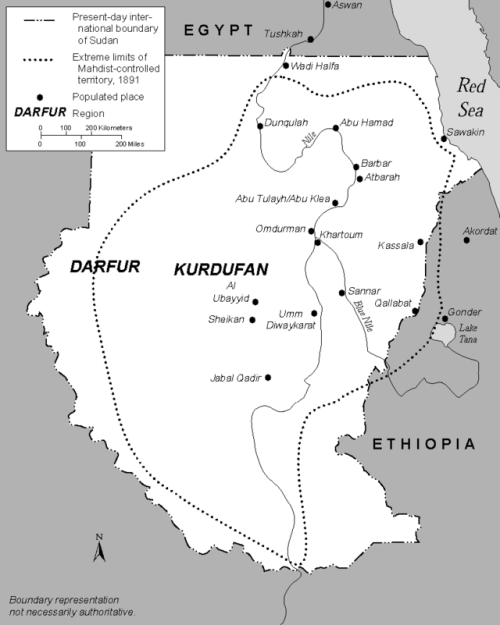


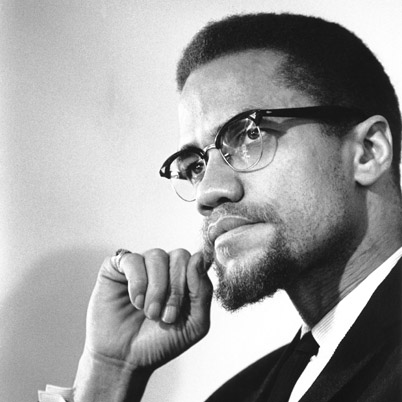
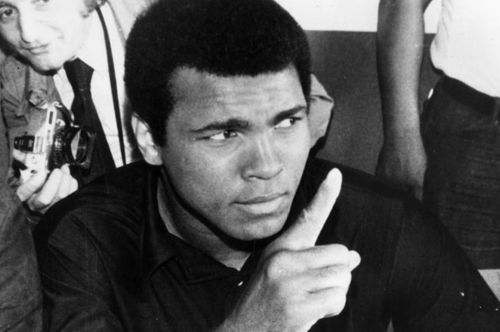






No comments:
Post a Comment